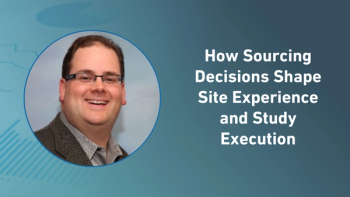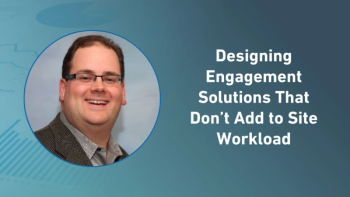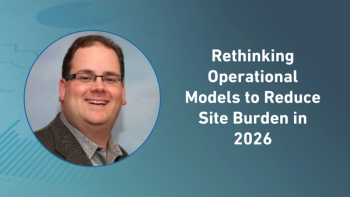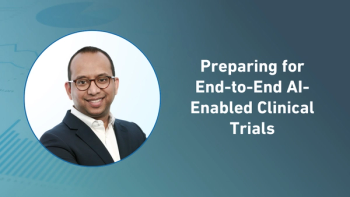- De-risking Drives Competitive Advantage. In today’s volatile clinical environment, proactively identifying and mitigating risks—across design, execution, and partnerships—is essential to staying ahead of competitors and maximizing asset value.
- Speed Must Be Grounded in Strategy. Accelerating timelines can significantly boost a drug’s valuation, but only if based on operational realities. Overly aggressive timelines risk trial failure and damage credibility with investors and regulators.
- Infrastructure and Prioritization Matter. Strong trial infrastructure, site relationships, and strategic CRO alignment are critical enablers of execution. Sponsors must think long-term and prioritize lifecycle planning over one-off project management.
Clinical development today is operating under a very different set of conditions than just a few years ago. And the stakes are high. With the number of clinical trials starts remaining flat,1 regulatory bodies such as the FDA facing staffing cuts,2 international tariffs impacting profit margins,3 and likely more industry tariffs on the horizon,4 meeting timelines and budgets is becoming increasingly unpredictable.
In this context, sponsors need to rethink their approach to risk and, by extension, to the contract research organizations (CROs) they work with. No company can afford to take a reactive or linear approach to trial design and execution. The question facing every clinical leader right now is: how do we de-risk our trials at every stage and turn that into a competitive advantage?
De-risking as a competitive advantage
The fundamental risk equation in drug and clinical development has not changed: as sponsors, you are spending capital today to generate value later. But the context around that equation has changed dramatically.
Today, trial timelines are more variable, enrollment is more competitive, and regulatory approvals can hinge on nuances of site performance, data quality, or geographic diversity. De-risking a clinical trial means anticipating and neutralizing these potential points of failure. It also means putting yourself in a better position than your competitors, who are likely contending with the same headwinds. A nuanced approach of looking at the clinical trial design and execution is a way of de-risking an asset.
The time-to-value equation
In drug development, timelines are directly tied to asset value. A drug’s worth is typically modeled through discounted cash flow, where each development milestone increases the probability of success and brings forward projected revenue. Completing Phase II in one year rather than two is more than simply a scheduling win. It can materially change a company’s valuation, especially when factoring in patent life and exclusivity windows. Post-Phase I clinical development is usually always on the critical path to submission/approval, so shortening this materially impacts the value of a drug.
Sponsors who shorten time to milestone are not just creating internal momentum. They are also signaling execution capability to investors and boards. That credibility is hard to regain once lost. The ability to hit or beat timelines is a value driver in itself.
But speed without precision is a trap. Sponsors and their CRO partners must differentiate between truly accelerated execution and unrealistic forecasting. An aggressive timeline built to impress investors may backfire if missed. Reputational damage, funding challenges, and reduced trust can follow. Speed is one of the main reasons drugs fail. A failure to understand a drug’s dose response in a defined population is a major reason for failure and/or repeating studies. Doing the wrong study quickly is never a good thing.
The better approach is to ground forecasts in operational reality, informed by therapeutic expertise and historical benchmarks. A timeline that is both ambitious and achievable is one of the most strategic assets a sponsor can hold.
Forecasting as a strategic function
Too often, forecasting is seen as an internal budgeting exercise rather than a core part of trial design. But clinical forecasting, when done properly, is a strategic act. It requires a realistic understanding of how protocol design, country selection, patient population, and competitive landscape will impact actual operations.
Sponsors should seek input from independent advisors early in the planning process. Strategic advisory boards that include disease area experts and development veterans can help pressure test assumptions and model alternative scenarios. The goal is not just to lock in a date but to increase the confidence that each milestone is actually achievable. The use of strategic advisory boards can help determine whether the planned indication is actually the best approach for an asset or for investors. Differences exist between rare diseases and broader primary care type of indications and studies.
This becomes especially important in venture-backed settings, where lead investors may not have deep in-house diligence capabilities. External advisors who understand the nuances of trial execution specific to molecule type, therapeutic area, and mechanism of action can fill that gap.
Competitive timelines, not just calendar timelines
While clinical milestones are important, they do not exist in a vacuum. What matters is not just when a trial completes, but how that timeline compares to competitors working on the same indication. First-in-class or first-to-market status can significantly boost market share and long-term commercial value. In some therapeutic areas, being second means a steep drop-off in both pricing power and patient uptake unless there is clear evidence of incremental benefit or differentiation. Any such benefit will need to be designed into the clinical program and agreed upon with regulators.
This is why benchmarking against similar trials in the same space is essential. A sponsor may complete enrollment in six months and feel successful. But if peer companies are routinely doing it in four, that performance is not competitive. Understanding your relative position and a commitment to quality is critical to assessing risk and return.
Infrastructure: The hidden accelerator
Clinical trials are people-driven but infrastructure-powered. Behind every study is a web of vendor contracts, site agreements, data systems, and regulatory processes. Building that infrastructure from scratch is slow and expensive, especially for small and mid-sized biotechs.
Sponsors need to assess their own readiness honestly. If internal teams do not have the capacity or experience to manage 50 or more vendors across multiple geographies, outsourcing infrastructure becomes not just a convenience but a competitive necessity. That does not mean outsourcing strategy. It means leveraging existing platforms to execute faster and more reliably.
This is a particularly important consideration when evaluating early-stage studies. Initiating trials in countries such as Australia, for example, can provide regulatory advantages such as far less restrictive regulatory requirements and generous R&D tax incentives. But those advantages are only meaningful if the operational setup is already in place to take advantage of them.
Prioritization and strategic fit
One underappreciated risk in clinical trials is prioritization—at the site, country, and partner level. In competitive disease areas, such as rare nephrology indications, multiple sponsors may be recruiting from the same limited patient pool. A site may have five studies competing for its attention. Sponsors should be asking: where does our trial rank in priority? What does it take to be first in line?
It goes beyond being well-liked or known. It is about clarity of communication, feasibility planning, and mutual respect. Sites prioritize trials that are well-run, supported, and strategically aligned with their capabilities. They deprioritize studies that appear risky, under-resourced, or operationally uncertain. Complex trials are more difficult to execute and interpret. Sites prefer simple well-written protocols that don’t try and do too much. Complex trials often lead to multiple amendments.
The same applies when choosing CRO partners. Not all trial execution partners have the same therapeutic concentration or global footprint. If a particular region or indication is only a small percentage of their business, that affects attention and accountability. Sponsors should align with partners who have demonstrated commitment and infrastructure in their priority areas.
Lifecycle thinking vs. project thinking
Perhaps the most important mindset shift for sponsors is to view trials not as isolated projects but as part of a broader asset lifecycle. A single trial may span 18 months, but the drug it supports could have a 10-to-15-year horizon. Strategic decisions made early, including protocol design, geography, timeline, and vendor choice, will compound over time, for better or worse.
De-risking for competitive advantage means planning for the full journey. It means asking what this study sets up for the next one and how execution today influences optionality tomorrow. And it means working with people who understand that perspective and target product profiles and can help navigate it.
De-risking is an essential path to competitive advantage
The clinical research environment is not getting easier. Sponsors are operating under more pressure with fewer resources, while economic and regulatory pressures create an environment of uncertainty. It’s clear that de-risking is not a nice-to-have but an essential path to competitive advantage.
This requires better forecasting, sharper benchmarking, smarter infrastructure choices, and deeper strategic planning. Sponsors who embrace these principles will be best positioned to survive the current volatility.
Mary Gunn, PhD, MBA, is CEO of Emerald Clinical Trials
References
1. Global Trends in R&D 2024: Activity, Productivity, and Enablers. IQVIA. February 22, 2024. https://www.iqvia.com/insights/the-iqvia-institute/reports-and-publications/reports/global-trends-in-r-and-d-2024-activity-productivity-and-enablers
2. Trump Begins Mass Layoffs at FDA, CDC, Other US Health Agencies. Reuters. April 1, 2025. https://www.reuters.com/business/healthcare-pharmaceuticals/trump-administration-begins-mass-layoffs-health-agencies-sources-say-2025-04-01/
3. Armstrong, A. Tariff Uncertainty Reigns Over Q1 Earnings, With Merck Taking $200M Blow So Far. BioSpace. April 24, 2025. https://www.biospace.com/business/tariff-uncertainty-reigns-over-q1-earnings-with-merck-taking-200m-blow-so-far
4. Exclusive: US Pharma Tariffs Would Raise US Drug Costs by $51 Billion Annually, Report Finds. Reuters. April 25, 2025. https://www.reuters.com/business/healthcare-pharmaceuticals/us-pharma-tariffs-would-raise-us-drug-costs-by-51-bln-annually-report-finds-2025-04-25/





